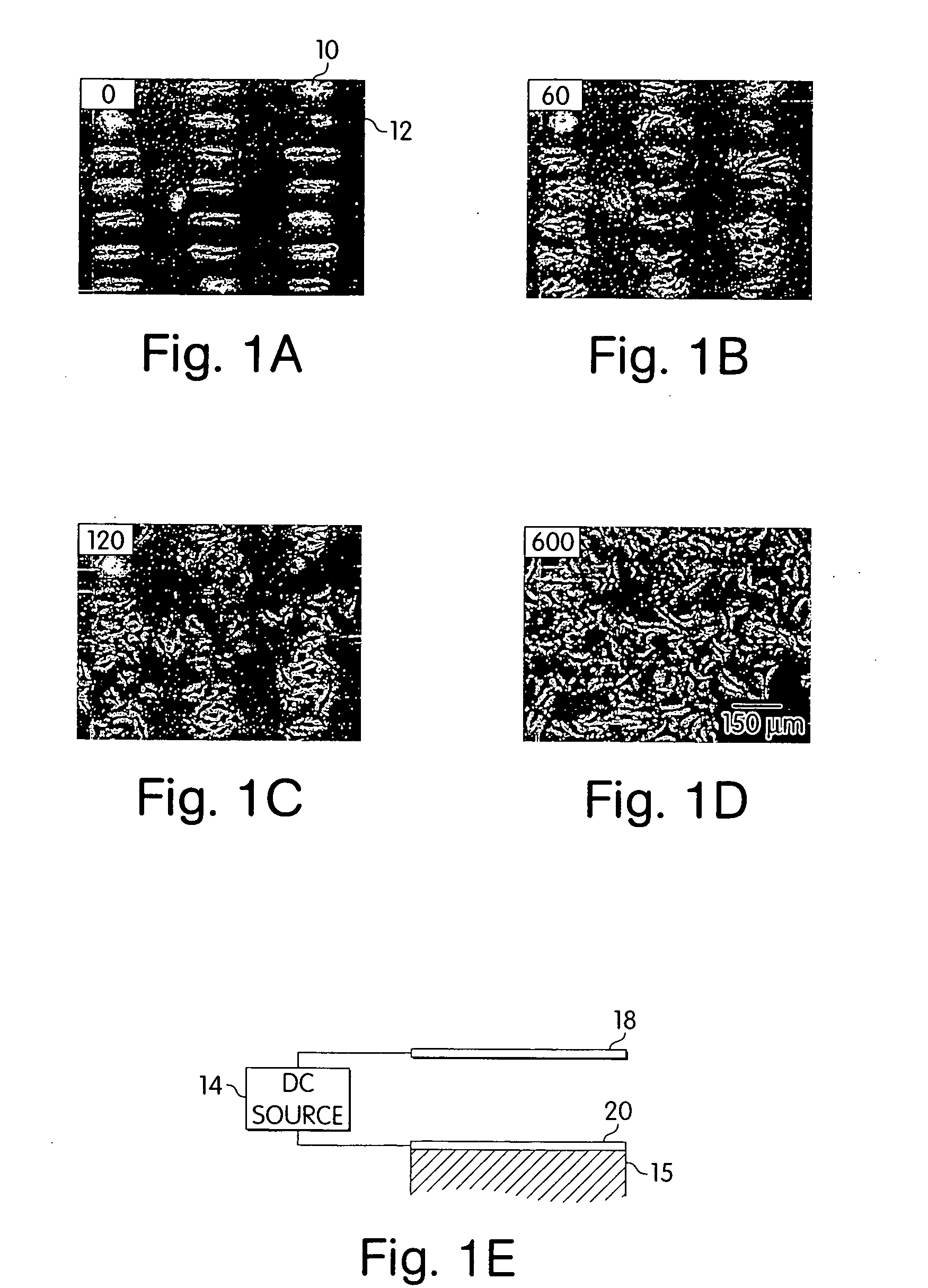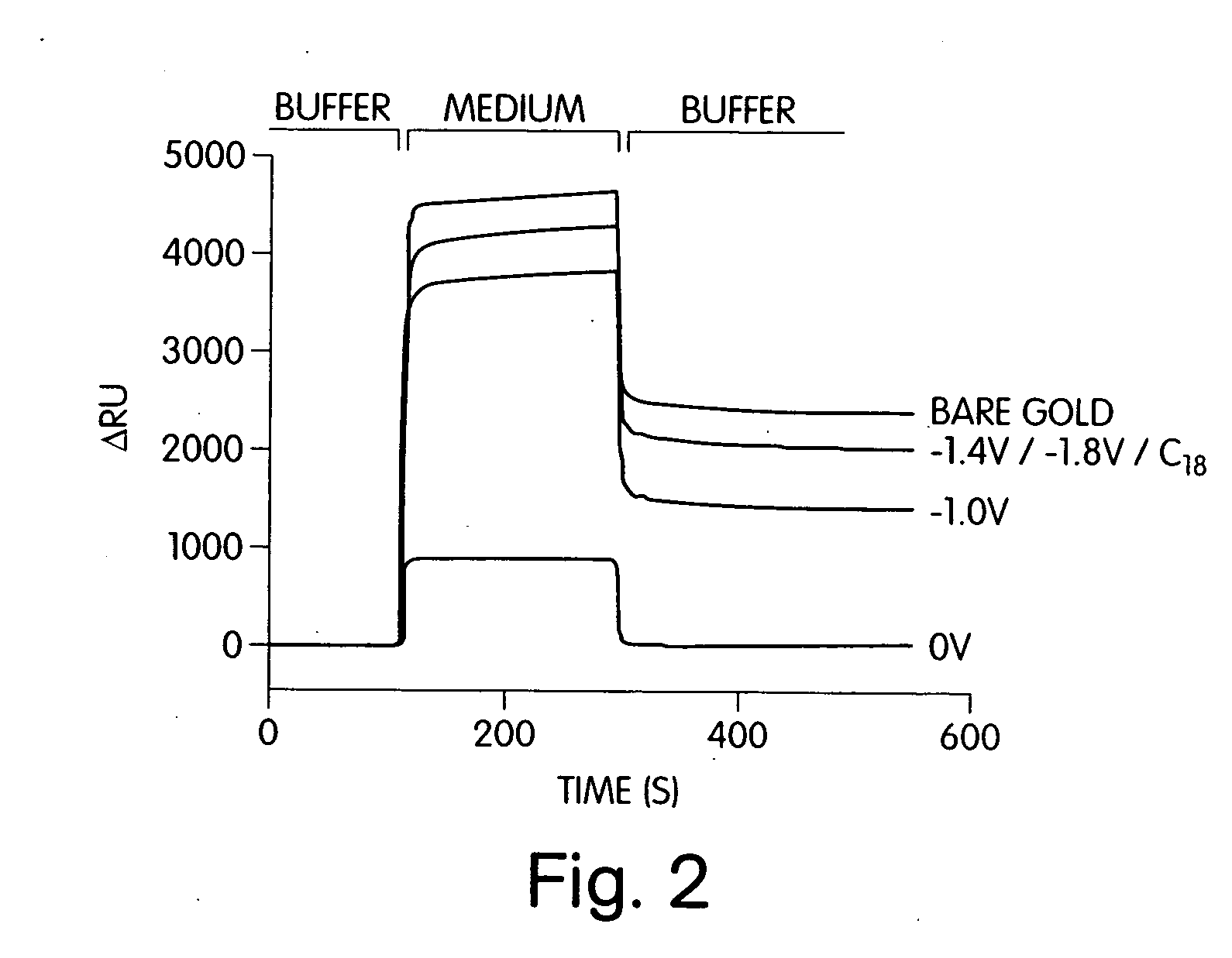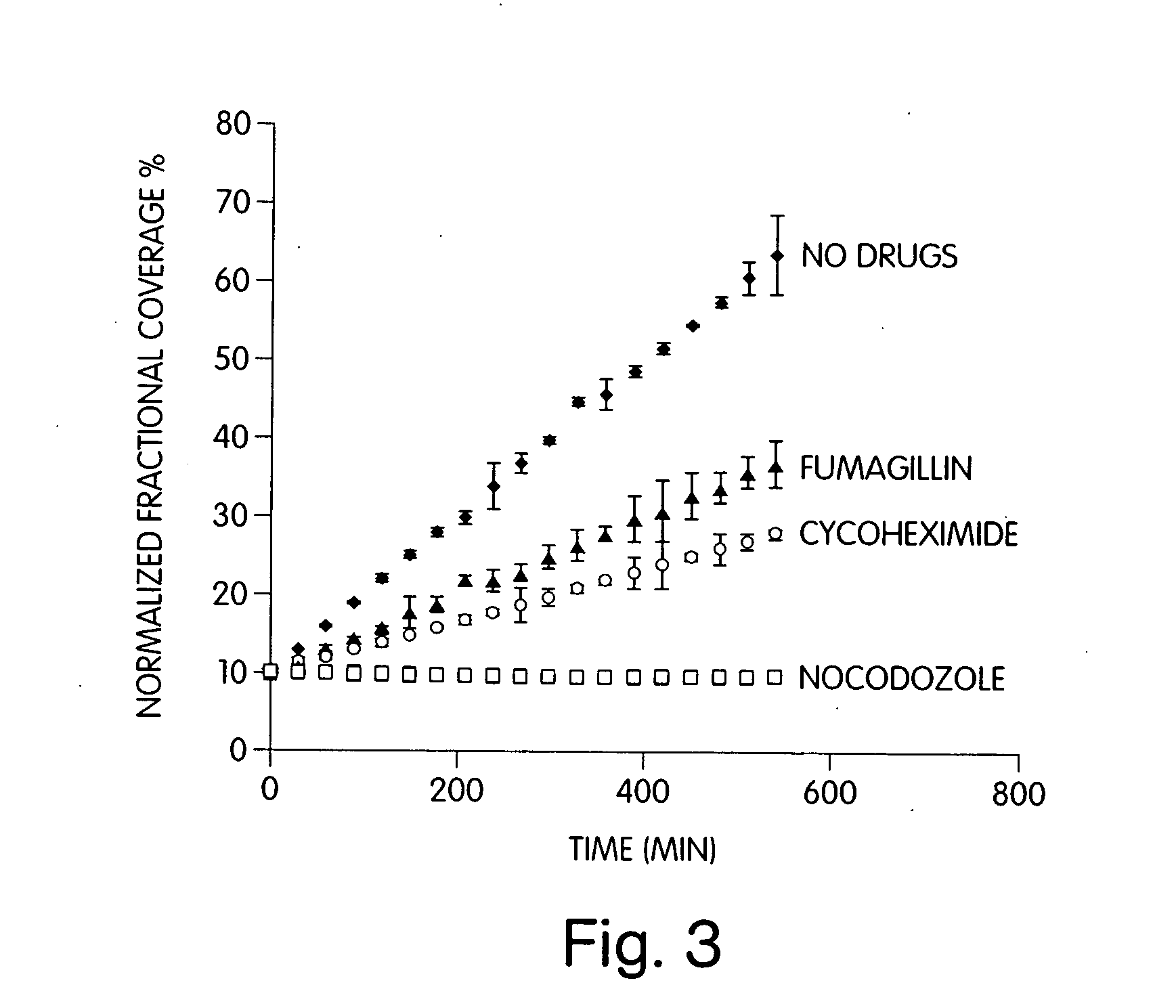Alteration of surface affinities
a technology of surface affinities and affinity, applied in the direction of coatings, other chemical processes, instruments, etc., can solve the problems of difficult access to facilities and equipment, destroying cells, and destroying clean-room facilities and other complex equipmen
- Summary
- Abstract
- Description
- Claims
- Application Information
AI Technical Summary
Problems solved by technology
Method used
Image
Examples
example 1
[0082] This example describes a procedure for electrically desorbing self-assembled monolayers from a surface to release cells patterned on the surface from the constraints of those patterns.
[0083] In this example, a microcontact printing technique, described in more detail below, was used to pattern SAMs on a gold surface. To create SAMs on a surface that could confine cells into specific regions on the surface, an alkanethiol, HS—(CH2)17—CH3 (“C18”), and an EG3-terminated thiol, HS—(CH2)11—(O—CH2—CH2)3—OH (“C11EG3”) were used. EG3-terminated SAMs on the surface are able to resist the adsorption of proteins as well as resist the attachment and spreading of cells. Application of a cathodic potentials of about −1.2 V (with respect to a stainless steel electrode) on a gold surface can cause the SAMs to desorb. Removal of the EG3-terminated SAMs from the surface then allowed the surface to adsorb proteins, for example, cell adhesion proteins present in solution.
[0084] Once the SAMs w...
example 2
[0091] In this example, surface plasmon resonance (“SPR”) experiments were performed on gold-coated substrates coated with C18 and C11EG3 thiols. The SPR experiments were carried out as described previously, for example, in Sigal, G. B.; Mrksich, M.; Whitesides, G. M., J. Am. Chem. Soc., 120:3464-3473, 1998. The gold-coated substrates were cut into 1 cm2 pieces and incubated with the appropriate thiol. Various voltage pulses were applied to the gold-coated substrates in PBS before they were mounted onto the sensor chip for SPR analysis on a Biacore 1000 SPR Analyzer (Biacore Inc., Piscataway, N.J.).
[0092] SPR sensorgrams as shown in FIG. 2 illustrate a comparison of the amounts of adsorbed serum proteins on the samples originally coated with C11EG3 after undergoing various cathodic voltages ranging from about −1.0 V to about −1.8 V for 30 s. The sensorgram on samples coated with a SAM formed by C18 is also shown. The SPR data indicates an increase in the thickness of the thin organ...
example 3
[0095] In this example, a method for screening agents whose biological activities are reflected in their influence on cellular motility is described.
[0096] BCE cells were patterned on a gold-coated substrate coated with C18 and C11EG3 thiols in discrete patterned regions, similar to those shown in FIG. 1 by techniques similar to those described above in Example 1. Additionally, serum-containing media was used in some instances.
[0097] When certain candidate drugs were added to the growth media before the voltage pulse, the migration of the cells out of the patterns was modified or completely abolished after the voltage pulse, as shown in FIG. 3 (data plotted as the normalized fractional coverage of the substrate (100%=fully confluent versus time). A summary of the influence of drugs on the motility of BCE cells after application of a voltage pulse (−1.2 V, 30 s) is shown in FIG. 3. Each datum in FIG. 3 represents the average of eight fields (i.e., islands as illustrated in FIG. 1A)...
PUM
| Property | Measurement | Unit |
|---|---|---|
| electric field | aaaaa | aaaaa |
| electric field | aaaaa | aaaaa |
| electric field | aaaaa | aaaaa |
Abstract
Description
Claims
Application Information
 Login to View More
Login to View More - R&D
- Intellectual Property
- Life Sciences
- Materials
- Tech Scout
- Unparalleled Data Quality
- Higher Quality Content
- 60% Fewer Hallucinations
Browse by: Latest US Patents, China's latest patents, Technical Efficacy Thesaurus, Application Domain, Technology Topic, Popular Technical Reports.
© 2025 PatSnap. All rights reserved.Legal|Privacy policy|Modern Slavery Act Transparency Statement|Sitemap|About US| Contact US: help@patsnap.com



